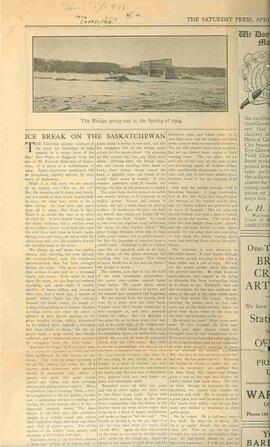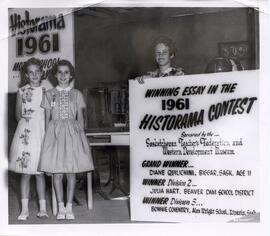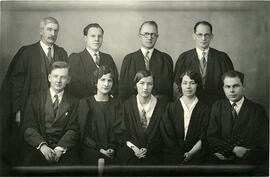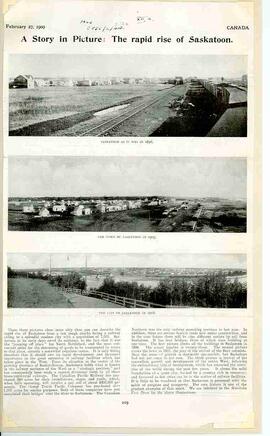News clippings relating to early settlers in Saskatoon.
- MSS C555/2/5.11
- Pièce
- 1911-1921.
Fait partie de A.S. Morton Manuscript Collection
Clippings from the Saskatoon Phoenix describe experiences of early settlers as they arrived in Saskatoon, beginning in the 1880s. The time period covers from 1 April 1911 to 19 April 1921. Also included is an article taken from a book on the settlement of the West by F. Maclure Sclanders, Commissioner of the Saskatoon Board of Trade. Also included is a program of the "Dinner for the '83 Boys", the men who homesteaded the Saskatoon area. Held 3 October 1912; names of participants are written on the inside of the program.





